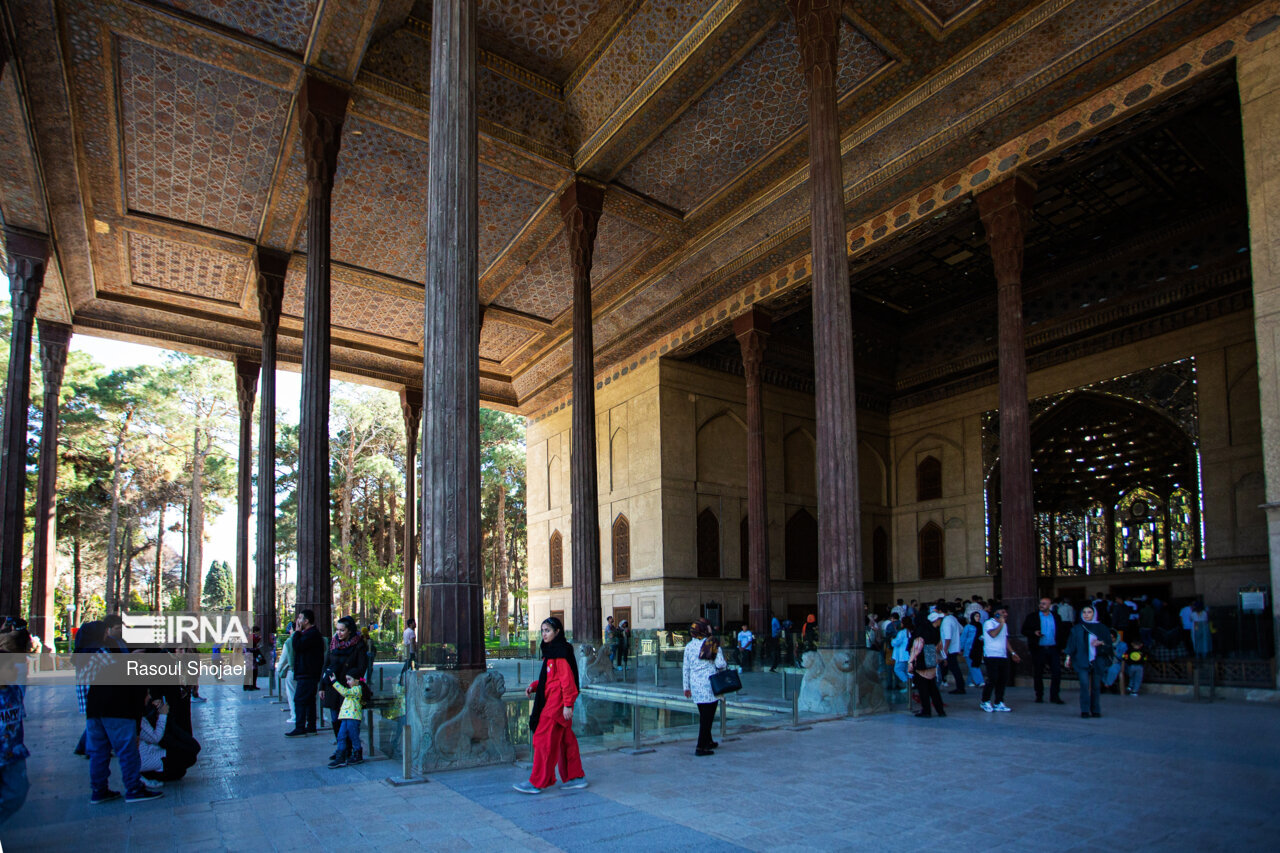Chehel Sotoun palace undergoes restoration

TEHRAN - A restoration, cleaning, and lighting project has commenced on the main portico of Chehel Sotoun, a 17th-century royal pavilion in Isfahan.
Head of Isfahan Cultural Heritage Department Amir Karamzadeh told IRNA on Sunday that the columns of the Chehel Sotoun’s iwan (portico) had not been cleaned in the past years, and their appearance and protective condition were not very good, so the first stage of cleaning and dusting the columns has begun, IRNA reported.
Karamzadeh added that after cleaning, the columns will be oiled and strengthened to achieve the desired structural and external conditions.
Referring to the implementation of the porch lighting project, he also said that about 10 billion rials ($10,000) have been spent on this project, and all the porch lighting systems and internal burnt-out lights have been improved.
Karamzadeh continued that in addition to lighting, restoration of the mirror work and strengthening of the historic tiles and paintings of the porch are also on the agenda, and these measures are being implemented in stages.
Before the start of restoration works, issues such as termite decay and the effects of moisture were examined with detailed pathology on the structure, and spraying operations were carried out to prevent further destruction, he said.
According to Karamzadeh, planning for organizing green spaces, flower planting, and revitalizing the complex's fountain and pond is also on the agenda.
He stated that the restoration work will not disrupt visits to the complex, adding that the cleaning of the columns will be completed in about two months, and upon completion of these measures, the Chehel Sotoun Complex will welcome domestic and foreign tourists with a fresher appearance.
Chehel Sotoun, meaning ‘Forty Columns’, is a Safavid-era Persian pavilion built by Shah Abbas II. The palace was used historically for entertainment and hosting dignitaries and ambassadors on its terrace or in grand reception halls.
The pavilion’s name derives from its 20 wooden columns, which, when reflected in the pool in front of the building, appear as 40.
The palace features intricate architectural and decorative designs, including wall and ceiling patterns known as Lachak Toranj, combining painting, tiling, and other elements. It is considered a prime example of Safavid Persian architecture.
Today, the site functions as a museum displaying artworks from various periods of Iranian history.
The lighting upgrade is part of ongoing efforts to preserve and enhance the site for cultural and tourism purposes.
KD
